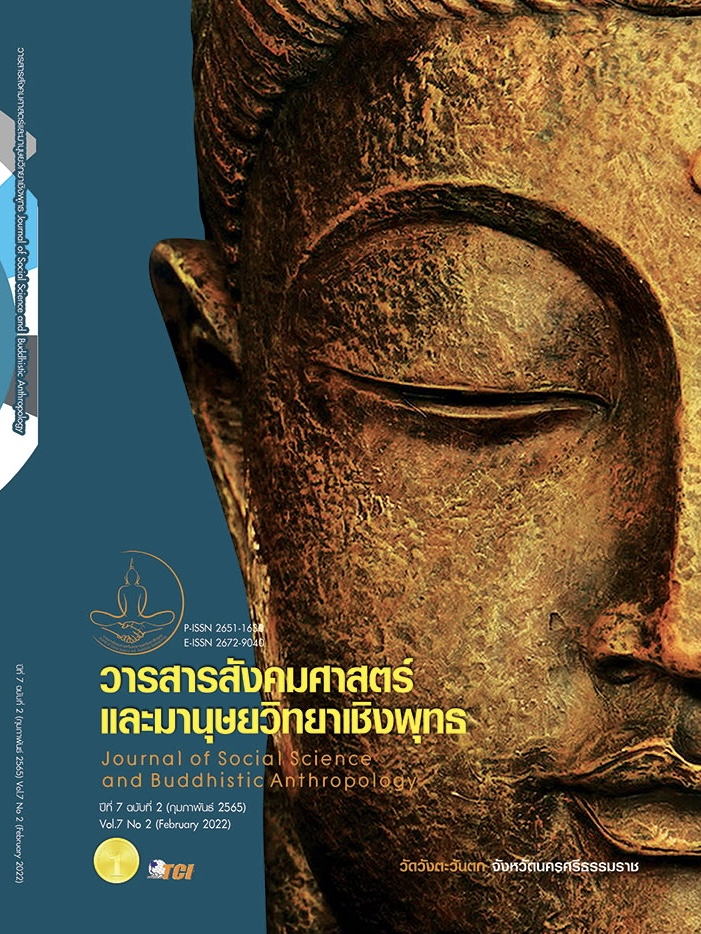THE DEVELOPMENT OF IMPLEMENTING DISRUPTIVE TECHNOLOGIES IN THAI HIGHER EDUCATIONAL INSTITUTIONS
Keywords:
Development of Implementing Disruptive Technologies, Disruptive technologies, Thai Higher Educational InstitutionsAbstract
The Objectives of this research article were to study the development and characteristic of implementing disruptive technologies in Thai Higher Educational Institutions. Sampling group were administrators and academic instructors using a random with a stratified method total of 345 people. The employed instrument in the form of questionnaire and the content validity was examined by 5 experts, with the reliability of 0.977 level. The statistics used for data analysis were mean and standard deviation. The researcher implemented the Five-Maturity Stage of Technological Maturity Gartner. The research results revealed that disruptive technologies in Thai Higher Educational Institutions consisted of Big data, Internet of Things (IoTs), Hyper Text Markup Language Version 5 (HTML 5), 3D-printing, Private cloud computing, Gamification in education, Cloud computing, Virtual reality, and Artificial intelligence and the development was in stage 3 Trough of Disillusionment. The characteristic of disruptive technologies in education which first appeared in Thai Higher Educational Institutions consisted of Private cloud computing, Hyper Text Markup Language Version 5 (HTML 5), 3D-printing, Big data, Gamification, Internet of Things (IoTs), Cloud computing, Virtual reality, and Artificial intelligence, consecutively with an average mean score of 3.40 and standard deviation (S.D.)=0.74. Each disruptive technology was developed in densely clustered with an average mean score range from 3.26 to 3.48 and standard deviation range from 0.71 to 0.78.
References
พระราชบัญญัติยุทธศาสตร์ชาติ 20 ปี พ.ศ. 2561-2580. (2561). ราชกิจจานุเบกษา เล่ม 135 ตอนที่ 82 ก. .
สำนักงานเลขาธิการสภาการศึกษา กระทรวงศึกษาธิการ. (2560). แผนการศึกษาแห่งชาติพ.ศ. 2560-2579. กรุงเทพมหานคร: พริกหวานกราฟฟิค.
สำนักงานเลขาธิการสภาการศึกษา สำนักงานปลัดกระทรวงศึกษาธิการ. (2557). แผนแม่บทเทคโนโลยีสารสนเทศ และการสื่อสารเพื่อการศึกษา (พ.ศ. 2557-2559). เรียกใช้เมื่อ 9 พฤษภาคม 2563 จาก http://www.bict.moe.go.th/
สำนักงานคณะกรรมการการอุดมศึกษา. (2550). กรอบแผนอุดมศึกษาระยะยาว 15 ปี ฉบับที่ 2 (พ.ศ. 2551-2565). กรุงเทพมหานคร: กระทรวงศึกษาธิการ.
สำนักงานคณะกรรมการพัฒนาการเศรษฐกิจและสังคมแห่งชาติ. (2559). แผนพัฒนาเศรษฐกิจและสังคมแห่งชาติฉบับที่ 12 (พ.ศ. 2560-2564). กรุงเทพมหานคร: สำนักนายกรัฐมนตรี.
สำนักนโยบายและแผนการอุดมศึกษา. (2561). สำนักงานคณะกรรมการการอุดมศึกษา. แผนอุดมศึกษาระยะยาว 20 ปี พ.ศ. 2561-2580. กรุงเทพมหานคร: พริกหวานกราฟฟิค.
สำนักนโยบายและยุทธศาสตร์ กระทรวงเทคโนโลยีสารสนเทศ และการสื่อสาร และศูนย์เทคโนโลยีอิเล็กทรอนิกส์ และคอมพิวเตอร์แห่งชาติ (NECTEC). (2554). กรอบนโยบายเทคโนโลยีสารสนเทศและการสื่อสารระยะ พ.ศ. 2554-2563 ของประเทศไทย (ICT 2020) ฉบับได้รับความเห็นชอบจากคณะรัฐมนตรี 22 มีนาคม 2554. กรุงเทพมหานคร: พริกหวานกราฟฟิค.
Bradford, D. J. (2010). Emerging and disruptive technologies for education: An analysis of planning, implementation, and diffusion in Florida’s eleven state university system institutions. In Doctoral Dissertation. University of Central Florida Orlando, Florida.
Christensen, C. M. (1997). The Innovator’s Dilemma: When New Technologies Cause Great Firms to Fail The Management of Innovation and Change Series (Revised Ed.). Boston, MA: Harvard Business School Press.
Combs, D. C. & Meskó, B. (2015). Disruptive Technologies Affecting Education and Their Implications for Curricular Redesign. Elsevier Journal The Transformation of Academic Health Centers, 7(1), 57-68.
Cronbach, L. J. (1943). On Estimates of Test Reliability. Journal of Educational Psychology, 34(1), 485-494.
Davis, F. D. & Venkatesh, V. (1996). A critical assessment of potential measurement biases in the Technology Acceptance Model: Three experiments. International Journal: Human-Computer Studies, 45(1), 19-45.
Gartner Research. (1995). Technological Maturity Gartner Hype Cycle for Emerging Technology. London: Gartner Inc.
Holmes, W. et al. (2019). Artificial intelligence in education: Promises and implications for teaching and learning. London: Independently Published.
Horváth, I. (2016). Disruptive Technologies in Higher Education. In 7th IEEE International Conference on Cognitive Infocommunications (CogInfoCom 2016). Wroclaw, Poland.
Kumar, S. (2013). Learnnovators: Bringing Innovation to Learning F. Magazine, Producer. Retrieved June 23, 2019, from http//learnnovators.com/top-11disruptive-e-learning-technologies-for-2013/
Likert, R. (1932). A Technique for the Measurement of Attitudes. Archives of Psychology, 22(140), 1-55.
Marquis, J. (2012). Forecasting the future of educational. Retrieved June 5, 2019, fromhttps://www.onlineuniversities.com/blog/2012/07/forecastingfuture-education/
Osman, G .& et al. (2013).
Understanding Management Students’ Reflective Practice through Blogging. The Internet and Higher Education, 16(13), 23-31.
Yamane, T. (1973). Statistics: An Introductory Analysis (3rd Ed). New York: Harper & Row.
Zappa, M. (2014). Envisioning the Future of Education Technology. Retrieved May 9, 2019, from http://envisioning.io/education/
Downloads
Published
How to Cite
Issue
Section
License
Copyright (c) 2022 Journal of Social Science and Buddhistic Anthropology

This work is licensed under a Creative Commons Attribution-NonCommercial-NoDerivatives 4.0 International License.








